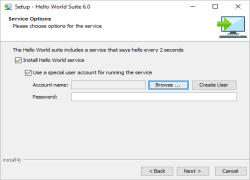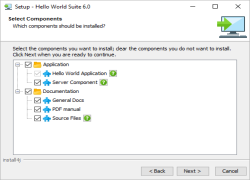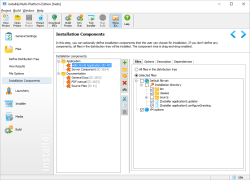Having trouble with performance and scalability issues is not so uncommon in my working environment as it should be. That is a shame – but there are a lot of pretty tools out there in this java developer world, that can rescue my reputation as a hardworking and serious software craftsman. (The sole existence of such tools gives me the impression that there must be other performance and scalability idiots out there in java world)
(Free) Application Performance Evaluator and Resource Allocation Tool APERA is a tool for performance modeling and evaluation, resource allocation, and capacity planning. APERA helps to build performance models for J2EE applications, solve the models, and choose the right configurations for the applications. If you search a warez download site for 'jprofiler 5 keygen'. Keygens, view serial numbers. KEYGENGURU.COM IS THE BEST WAY TO FIND CRACKS, SERIAL NUMBERS, KEYGENs. Daemon Tools Lite 4.30.1 (650683) Windows 7. The evaluation key for JProfiler will be sent to you by email. Please take special care to enter your email address correctly. Obtaining a trial copy of JProfiler. To get a 10-day evaluation copy of JProfiler, go to the trial download page, enter your name and e-mail address and download the version for your platform (Windows, Linux X86, Mac OS X or Solaris SPARC). With the Windows version, you get a setup executable that installs JProfiler and launches it right away. Unless you specified the 'nowait' parameter on the command line together with a 'config' argument, (only necessary for pre 1.6 JVMs), you do not have to enter a license key on the remote machine, the license key is always provided by the JProfiler GUI. Because of that, it is sufficient to unpack JProfiler to any directory where you have write. Hi, I have downloaded build 15044 and applied for an evaluation key. I received the email but when I enter the key, it said it's expired. I've received the email like 5 minutes ago so I don't quite know what is the problem.
A pretty neat thing might be a profiler and there are a lot of good and better ones available. For unknown reasons I personally fell in love with JProfiler many years before and sometimes I tend to evangelize my working mates using it. If you want to try it – the guys from ejtechnologies give you ten days time ;)

Although I used the pretty little thing called JProfiler very often over the years in various environments, I recently stumbled across a problem when I tried to use it with IBMs J9 virtual machine on a 64-Bit Linux. JProfiler has a very good built-in integration wizard that worked very good many times before, but not on the following system environment:

- VMware Server
- Suse Linux Enterprise 11 – 64 Bit
- IBM J9 JDK 1.6
- Apache Tomcat 7.0.27
- JProfiler 7.2.2
Jprofiler Evaluation Key Concepts
So I had to integrate this dream team manually.

- Prerequisite:
- Change tomcat setenv.sh
- Change catalina.sh
- Start Tomcat in profiling mode
- Connect with JProfiler GUI
JProfiler is downloaded and a licence is available.
http://www.ej-technologies.com/download/jprofiler/file
To install JProfiler I unzipped jprofiler_linux_7_2_2.tar.gz to opt/jprofiler.
Afterwards, it can be started by opt/jprofiler/jprofiler7/bin/jprofiler.sh .
The following line needs to be introduced into the setenv.sh script of your Tomcat installation and is the key of a successfull handshake between the profiler and the JVM started by Tomcat.export LD_LIBRARY_PATH=/opt/jprofiler/jprofiler7/bin/linux-x64
Next thing to do is to configure your JVM with JProfiler agent as a JVM native agent library. Besides that you should configure the agent to open up a server socket for remote connections of the JProfiler GUI.
You can do this for example within your catalina.sh script with the following line
exec '$_RUNJAVA' '$LOGGING_CONFIG' -agentpath:/opt/jprofiler/jprofiler7/bin/linux-x64/libjprofilerti.so=port=6766-Xshareclasses:none $JAVA_OPTS $CATALINA_OPTS -Djava.endorsed.dirs='$JAVA_ENDORSED_DIRS' -classpath '$CLASSPATH' -Dcatalina.base='$CATALINA_BASE' -Dcatalina.home='$CATALINA_HOME' -Djava.io.tmpdir='$CATALINA_TMPDIR' org.apache.catalina.startup.Bootstrap '$@' start
The part in bold letters is the change made to the original script line.
Simply done with the following command catalina.sh run
The output of tomcat console should be like that:
Using CATALINA_BASE: /opt/apache-tomcat-7.0.27-lab1
Using CATALINA_HOME: /opt/apache-tomcat-7.0.27-lab1
Using CATALINA_TMPDIR: /opt/apache-tomcat-7.0.27-lab1/temp
Using JRE_HOME: /opt/ibm-java-x86_64-60
Using CLASSPATH: /opt/apache-tomcat-7.0.27-lab1/bin/bootstrap.jar:/opt/apache-tomcat-7.0.27-ab1/bin/tomcat-juli.jar
JProfiler> Protocol version 37
JProfiler> Using JVMTI
JProfiler> Thread status info workaround enabled.
JProfiler> Restricted JVMTI version 1.1 detected.
JProfiler> 64-bit library
JProfiler> Listening on port: 6766.
JProfiler> Instrumenting native methods.
JProfiler> Native library initialized
JProfiler> VM initialized
JProfiler> Waiting for a connection from the JProfiler GUI ...
The Tomcat JVM will run Tomcat only if a JProfiler GUI is connected through port=6766.
Start JProfiler as mentioned above and then do the following clicks:
Menu Session->NewSession
Attach locally through port 6766
Choose Instrumentation
SessionStartup can be easiliy skipped with “OK”
Congratulations you have reached the next level in your quest for better java web application performance ;)
Jprofiler Evaluation Key

Jprofiler Evaluation Key Crack
